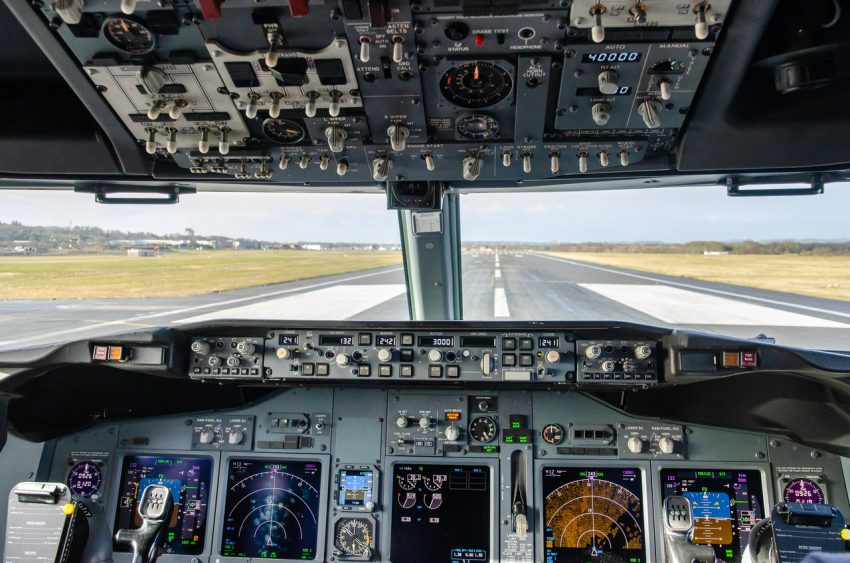Standard Instrument Departures (SIDs) are commonly designed as straight, with aircraft heading the same direction as the runway until at least 400ft because excessive low-altitude banking is unsafe. Yet, there are many cases where changing course sooner could be beneficial for noise abatement, obstacle clearance, and even runway capacity. Is there a way to ‘turn’ early and still maintain the straight SID criteria?
[blockquote text=”Applying the Doc 8168 criteria more strategically can mean real benefits for noise abatement, obstacle avoidance, and runway capacity” text_color=”#004361″ show_quote_icon=”yes”][vc_separator type=’transparent’ position=’center’ color=” thickness=’5′ up=” down=”]
Benefits of early course changes
An early course change on departure could help with noise abatement by reducing the number of people that are overflown by the nominal track, for instance, or to more easily avoid an obstacle that would otherwise limit the aircraft payload due to the steep climb required. It could also help achieve higher runway throughput with more independent SIDs that are separated by at least 45 degrees immediately after take-off.
However, any course change that is too large and initiated too early risks a wing tip hitting the ground or an obstacle as the aircraft banks. For this reason, Instrument Flight Procedure (IFP) criteria are careful to differentiate between what can be called a straight departure and what is considered a turn, as well as when and where any turn can be initiated. Fortunately, these criteria allow for flexibility to still ‘turn’ earlier than one might expect.
Turn vs. track adjustment
According to ICAO’s Doc 8168 PANS-OPS Vol. II, a straight departure is a course that changes no more than 15 degrees (i.e., track adjustment). Anything greater than 15 degrees is considered a turn, which is allowed only after the aircraft has reached a minimum height of 120m/400ft.
In the case of a turn (>15 degrees), the first fly-over waypoint where it may be initiated is positioned at 2,7NM from the runway end with a standard procedure design gradient (PDG) of 3,3%, and at 1,58NM if the PDG is 8%. (Waypoints are preferable to altitude to avoid track spread and uncertainty for ATC regarding the exact turning point.)
The earliest waypoint can be much closer to the runway end when applying a straight departure with only track adjustment. In some recent projects, we were able to achieve significant benefits in noise abatement, obstacle avoidance, and runway capacity by using a more strategic approach to applying the criteria for straight and turning departures.
How to achieve early turn SIDs
In one such project regarding obstacles, we were able to design a (semi-)straight departure that required less obstacle clearance than a turning departure. In obstacle-rich environments, the longer the straight departure can be, the lower the required climb gradient and, therefore, the more beneficial for the aircraft payload.
In a noise abatement case where avoiding a local community would have required a turn that was not possible, we found that a departure with two consecutive 15-degree track adjustments could help substantially. For another runway capacity project, an initial track adjustment of 15 degrees for SID pairs followed by another smaller adjustment (both left and right) proved to be enough to attain the required total 45 degrees divergence for independent SIDs while still maintaining the straight departure criteria.
As these projects show, there is more room for beneficial course adjustments within the criteria for straight departures than many may think. Applying the Doc 8168 criteria more strategically can mean real benefits for noise abatement, obstacle avoidance, and runway capacity for the airport, operators, and surrounding communities.
About To70. To70 is one of the world’s leading aviation consultancies, founded in the Netherlands with offices in Europe, Australia, Asia, and Latin America. To70 believes that society’s growing demand for transport and mobility can be met in a safe, efficient, environmentally friendly and economically viable manner. To achieve this, policy and business decisions have to be based on objective information. With our diverse team of specialists and generalists to70 provides pragmatic solutions and expert advice, based on high-quality data-driven analyses. For more information, please refer to www.to70.com.

